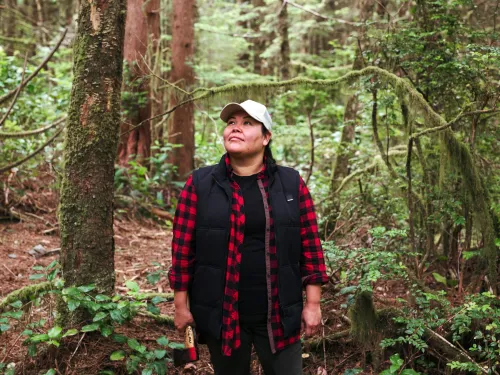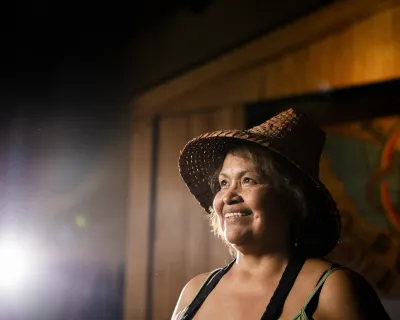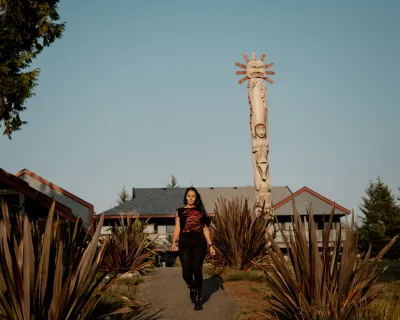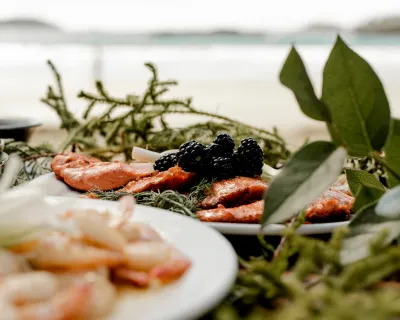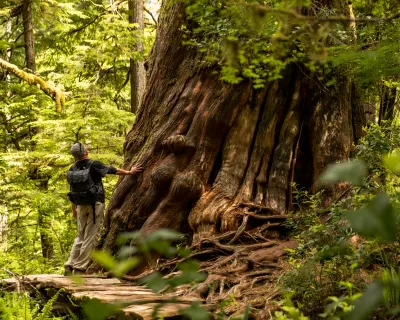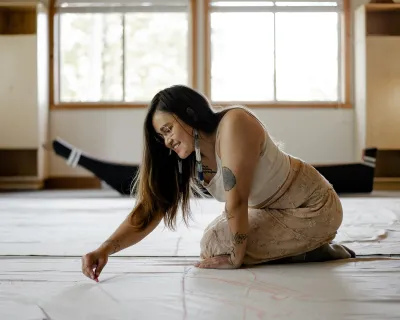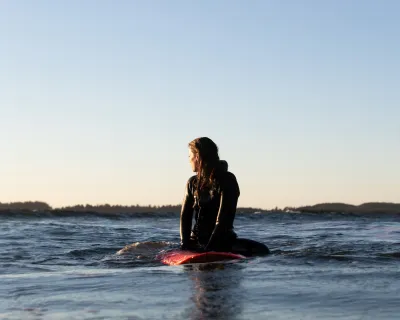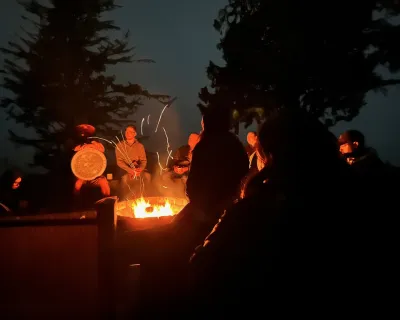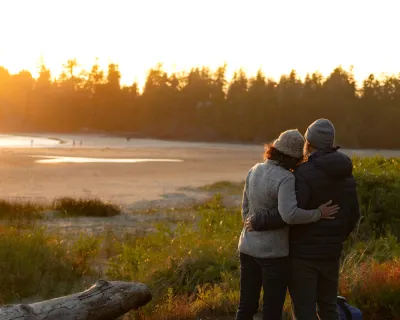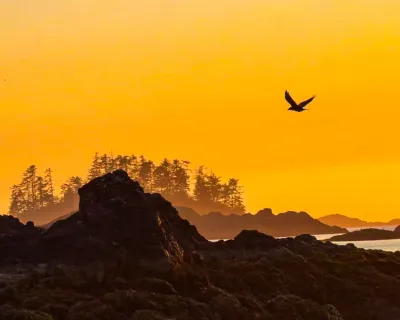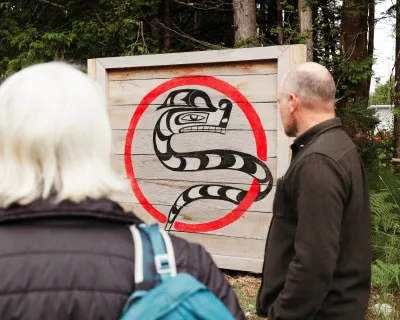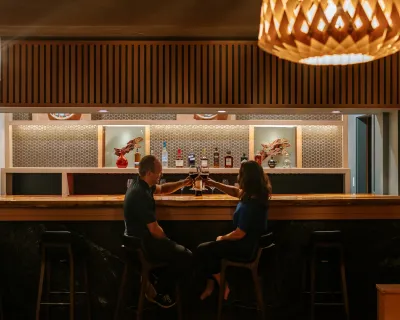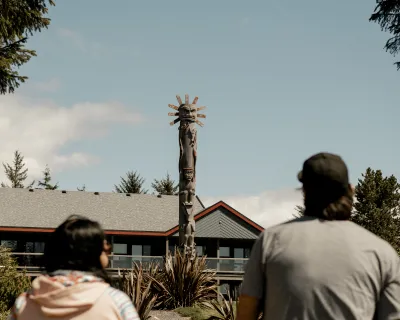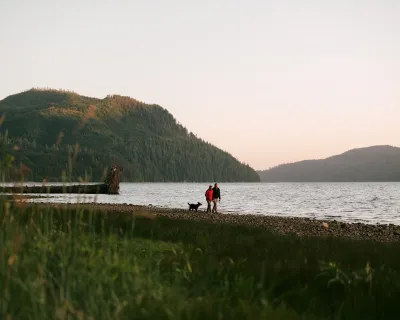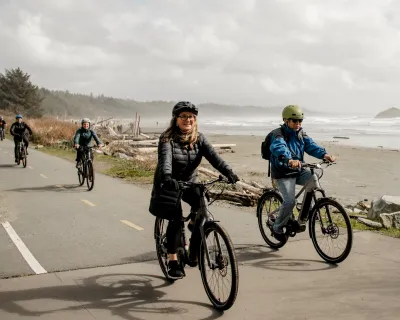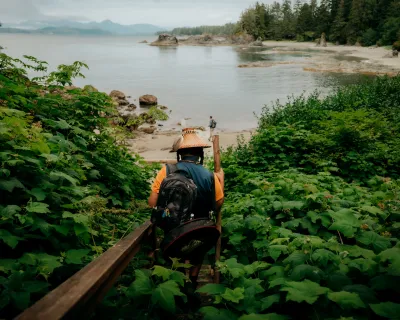Learn Tla-o-qui-aht ways at Tin Wis Resort
Tla-o-qui-aht First Nation/Tofino, BC — When Maria Clark returned to Tofino for a potlatch 14 years ago, she was welcomed back to her homelands with a gift from her uncle. Freshly harvested cedar bark strips were neatly bound together, awaiting her arrival.
The then-31-year-old had never woven anything before, but was nudged by her aunt to give it a try.
"What will be will be," Clark recalled her aunt saying. "You have the bark - the rest will follow."
Watch > Join Maria Clark at Tin Wis Resort to learn the ancient art of cedar weaving, captured in this latest ZenSeekers video
It didn't take long for Clark's late-grandmother, Dolores Keitlah, to step in. Gathered inside Keitlah's home in the Tla-o-qui-aht First Nation village of Esowista, Clark was carefully taught how to prepare the cedar for weaving by first removing the outer bark layer.
She spent hundreds of hours practicing all summer before completing her first cedar basket. Her teachers, Keitlah and Hesquiaht master weaver, Dolores Baines, touted her as "a natural," Clark said.
Clark is now weaving more of her and her Nation's heritage and history into her guests stay at the Tla-o-qui-aht First Nation-owned, oceanfront Tin Wis Resort. (Read on to find out how to book into a cedar weaving workshop.)
"I had a healing experience," she recalled. "For a long, long time, I felt lost. We, as Indigenous people, don't always feel like we have an identity. We're missing our culture and language and our traditions. Weaving really put that into perspective for me."
Eager to continue connecting to this ancestral artform, Clark said weaving kept her at home near Tofino, where she relocated a year later and has remained ever since.
"I really credit learning how to weave to becoming a healthier [and] stronger Nuu-chah-nulth woman," she said. "It ignited something in me."
Inside her grandmother's quiet house on Long Beach, Clark said she could hear Nuu-chah-nulth women singing as she wove.
"There's a frequency," she said. "You need to get the frequency right to get in connection with your ancestors."
Clark is now transitioning from student to teacher by leading workshops on how to weave a cedar rose. This contemporary piece of Nuu-chah-nulth art is often used in jewelry and as adornment on boutonnieres or bouquets, Clark described. Coming up, Clark is hosting cedar weaving workshops.
Using cedar that Clark has harvested from forests within Tla-o-qui-aht First Nation's hahoulthee, or traditional territory, she guides visitors on how to weave their own cedar rose.
Learn Tla-o-qui-aht ways at Tin Wis Resort
Hosted at the Best Western Plus Tin Wis Resort in Tofino, these workshops are targeted towards smaller groups up to seven, offering participants the opportunity to ask questions and learn the history of weaving on the coast.
Visitors are often tempted to take driftwood or seashells home with them, said Best Western Plus Tin Wis Resort marketing manager Rachel Leghissa.
But one of Tla-o-qui-aht's guiding principles within its ʔiisaak pledge is, Qʷaasiinḥapin, which means "to leave things as they are," she said.
"A cedar rose is something you have permission to take from the land that actually gives back to the community," said Leghissa. "It's a win-win."
Objects historically produced by weaving, like shawls, hats, baskets and floor mats, were used by Nuu-chah-nulth nations on a daily basis, said Clark.
Baskets were woven to harvest berries and clams so they could be easily transferred between villages, she added.
It's a ritual that's been passed down through generations and requires following a set of protocols to ensure it's done respectfully, Clark said.
With this in mind, Clark said she was taught to express prayers of gratitude "for what Mother Earth is giving us," prior to harvesting.
"[Tla-o-qui-aht First Nation] fights hard to be able to keep these trees around so that our traditions can carry on," she said.
"I'm mindful to never over harvest and only take what I'm going to use." Because Canada's residential school system tried to strip Indigenous communities of their language, culture and heritage, Clark said it's important for her to share her teachings with those visiting the area.
"Practicing weaving means that we're still winning," Clark said. "Our traditions are living."
When you go
The Tin Wis Resort is a Tla-o-qui-aht First Nation-owned beachfront hotel located in Tofino (within Tla-o-qui-aht First Nation’s homelands) located on the West Coast of Vancouver Island.
getting there access to Tofino is a BC Ferries adventure away from Vancouver or direct flight from YVR with Pacific Coastal Airlines.
where to stay book your stay with the Best Western Plus Tin Wis Resort and wrap yourself in a grounded retreat, from beach time to hikes to a forest sauna, all at your doorstep.
Link a cultural stay at Tin Wis Resort, with stops along BC’s west coast to other First Nations for a transformative #indigenouscoastbc road trip; plan today at www.indigenouscoastbc.com.
If you don't make it for a weaving workshop, no worries, you can purchase cedar roses and other Tla-o-qui-aht artisan outputs at their adjacent Tsawaak RV Resort & Campground.
learn more about Tla-o-qui-aht’s iisaak pledge on the Tla-o-qui-aht Tribal Parks website.
read more and start planning your Tin Wis escape now.
